-
Learning the lessons of the BP oil spill

In an attempt to limit the harm of the Deepwater Horizon oil spill in the Gulf of Mexico in 2010, three million liters of dispersant were used to dissipate the oil; on the surface the damage seems limited, but the seabed is covered with a thick layer of gunk; scientist from around the world are now working on models that can be consulted by decision makers when there is another oil spill disaster
-
-
Combining CO2 storage with enhanced oil recovery can aid U.K. economy
Combining carbon storage with enhanced oil recovery techniques in key fields could generate up to 2.7 billion pounds in extra economic output; if a combination of carbon storage and enhanced recovery techniques is fully exploited, it is estimated that nineteen potentially suitable oil fields on the U.K. Continental Shelf (UKCS) could contribute 15 percent of all UKCS oil production by 2030
-
-
“Soft infrastructure” as storm surge defense alternatives
The flooding in New York and New Jersey caused by Superstorm Sandy prompted calls from Governor Andrew Cuomo and other officials to consider building storm surge barriers to protect Lower Manhattan from future catastrophes. Such a strategy, however, could make things even worse for outlying areas that were hit hard by the hurricane, such as Staten Island, the New Jersey Shore, and Long Island’s South Shore, a City College of New York landscape architecture professor warns; landscapers and engineers say that environmentally friendly “soft infrastructure” would mitigate flood damage without sending harm elsewhere
-
-
Chemists convert greenhouse gas to fuel
What if you could take greenhouse gas and convert it to fuel for an energy-hungry world? Scientists, using modern genetics, accomplished exactly this; the researchers’ findings are just a first step toward converting carbon dioxide, one of the most abundant emissions from fossil fuel use, into usable hydrocarbons
-
-
The world’s 300 000 glaciers are melting, causing sea level to rise
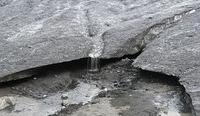
Anthropogenic climate change leads to melting glaciers and rising sea level; between 1902 and 2009, melting glaciers contributed eleven centimeters to sea level rise; they were therefore the most important cause of sea level rise; the scientists numerically modeled the changes of each of the world’s 300 000 glaciers
-
-
How groundwater pumping affects streamflow
Groundwater provides drinking water for millions of Americans and is the primary source of water to irrigate cropland in many of the nations most productive agricultural settings; although the benefits of groundwater development are many, groundwater pumping can reduce the flow of water in connected streams and rivers — a process called streamflow depletion by wells; new USGS report describes processes and misconceptions concerning the effects of groundwater pumping on streamflow
-
-
Snowpack, essential freshwater source for billions, threatened
Snowpack, an essential source of drinking water and agricultural irrigation for billions of people, could shrink significantly within the next thirty years; the news is particularly troubling for snowpack-dependent California — the largest producer of agriculture products in the country and the sixth-largest agriculture exporter in the world; by filling reservoirs and watering crops when warmer, drier weather sets in, mountain snowpack has become vital to people and ecosystems in regions such as the Western United States, Alpine Europe, Central Asia, and downstream of the Himalayas and Tibetan Plateau — home to more than 50 percent of the world’s population
-
-
Himalayan glaciers to shrink even if temperatures hold steady, risking South Asia water supply
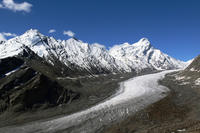
Come rain or shine, or even snow, some glaciers of the Himalayas will continue shrinking for many years to come; the most conservative findings of a new research on Bhutan, a region in the bull’s-eye of the monsoonal Himalayas, indicate that even if climate remained steady, almost 10 percent of Bhutan’s glaciers would vanish within the next few decades; what is more, the amount of melt water coming off these glaciers could drop by 30 percent
-
-
U.S. electric power grid “inherently vulnerable” to terrorist attacks: report
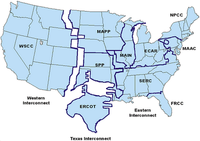
The U.S. electric power delivery system is vulnerable to terrorist attacks which could cause much more damage to the system than natural disasters such as Hurricane Sandy, blacking out large regions of the country for weeks or months, and costing many billions of dollars, says a newly released report by the National Research Council
-
-
Con Ed overcame many obstacles to restore power to NYC
On 29 October Hurricane Sandy slammed into New York City and took out the power in most of Lower Manhattan, even knocking out power to the headquarters of Consolidated Edison’s (Con Ed), the electricity supplier for NYC; due to the flooding in Lower Manhattan, employees had to use rafts to rescue coworkers trapped in the company’s East 13th Street power station; in the days after the storm, as with many other New Yorkers, Con Ed almost ran out of gas, but that did not stop the company from restoring power back to Lower Manhattan less than four days after the storm
-
-
Hurricane Sandy caused dramatic changes to hundreds of miles of East Coast shoreline
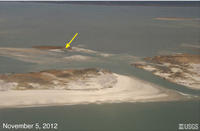
The United States Geological Survey (USGS) has released a series of aerial photographs showing before-and-after images of Hurricane Sandy’s impacts on the Atlantic Coast; the photos, part of a USGS assessment of coastal change from as far south as the Outer Banks of North Carolina to as far north as Massachusetts, show that the storm caused dramatic changes to portions of shoreline extending hundreds of miles
-
-
New fluorescence technology pinpoints oil leaks at sea
Cambridge Consultants uses fertility monitor technology in oil leak early warning system; the company has built an oil spill detection technology platform which is capable of detecting the natural fluorescence of even tiny amounts of oil in or on water
-
-
Plants, soils could exacerbate climate change as global climate warms
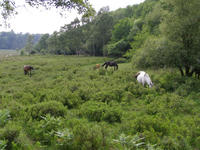
Scientists have demonstrated that plants and soils could release large amounts of carbon dioxide as global climate warms; this finding contrasts with the expectation that plants and soils will absorb carbon dioxide and is important because that additional carbon release from land surface could be a potent positive feedback that exacerbates climate warming
-
-
Sea-level records reveal tight correlation between ice volume and polar temperature
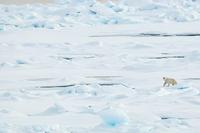
During the last few million years, global ice-volume variability has been one of the main feedback mechanisms in climate change, because of the strong reflective properties of large ice sheets. Ice volume changes in ancient times can be reconstructed from sea-level records; a new study has revealed a rapid response between global temperature and ice volume/sea-level, which could lead to sea-levels rising by over one meter
-
-
In 2009, engineers predicted surge threats to N.Y.-N.J. and offered detailed mitigation measures
The leaders of the U.S. top engineering association, reflecting on the destruction inflicted by Superstorm Sandy, say that more than three years ago the association presented studies showing that a devastating storm surge in the region was all but inevitable; participants in the 30-31 March 2009 American Society of Civil Engineers (ASCE) conference called on NYC officials seriously to consider whether to install surge barriers or tide gates in New York Harbor to protect the city
-
More headlines
The long view
Helping Strengthen America’s Critical Infrastructure
Everyday life depends on a robust infrastructure network that provides access to running water, communications technology and electricity, among other basic necessities. The experts who keep our national infrastructure secure and resilient also need a strong network to share their knowledge and train the next generation of professionals capable of solving complex infrastructure challenges.
AI and the Future of the U.S. Electric Grid
Despite its age, the U.S. electric grid remains one of the great workhorses of modern life. Whether it can maintain that performance over the next few years may determine how well the U.S. competes in an AI-driven world.
Using Liquid Air for Grid-Scale Energy Storage
New research finds liquid air energy storage could be the lowest-cost option for ensuring a continuous power supply on a future grid dominated by carbon-free but intermittent sources of electricity.
Enhanced Geothermal Systems: A Promising Source of Round-the-Clock Energy
With its capacity to provide 24/7 power, many are warming up to the prospect of geothermal energy. Scientists are currently working to advance human-made reservoirs in Earth’s deep subsurface to stimulate the activity that exists within natural geothermal systems.
Experts Discuss Geothermal Potential
Geothermal energy harnesses the heat from within Earth—the term comes from the Greek words geo (earth) and therme (heat). It is an energy source that has the potential to power all our energy needs for billions of years.
